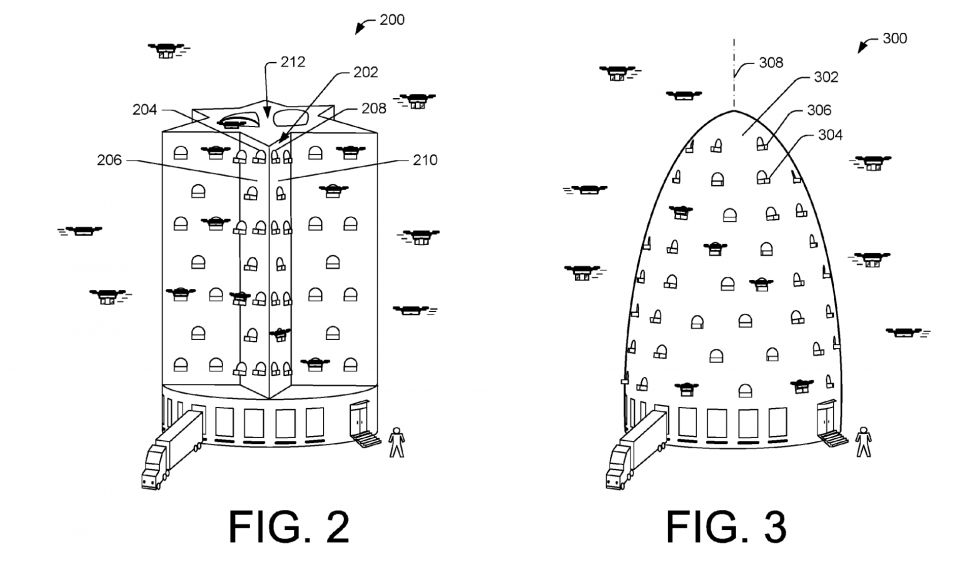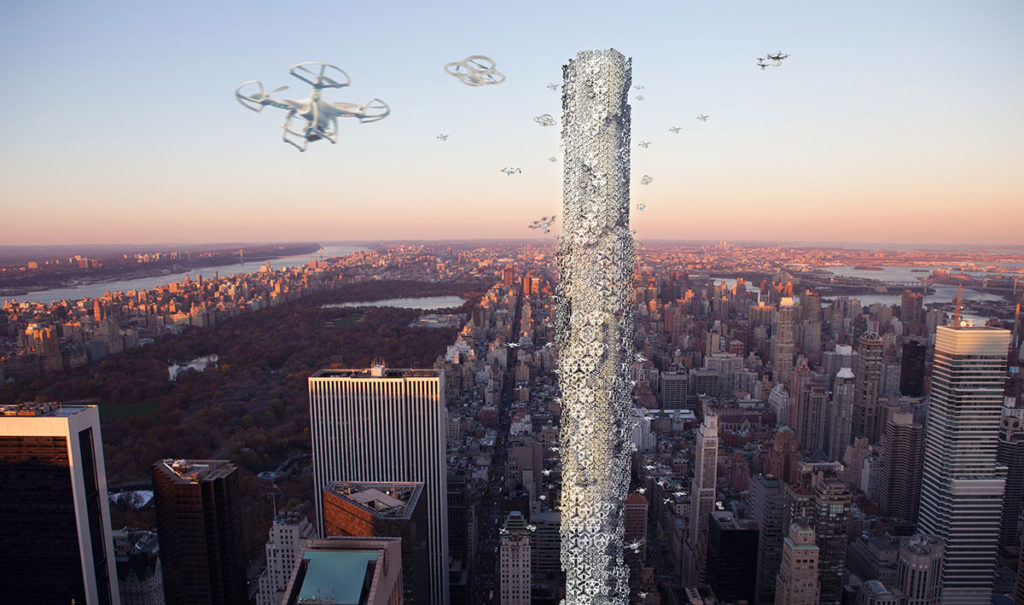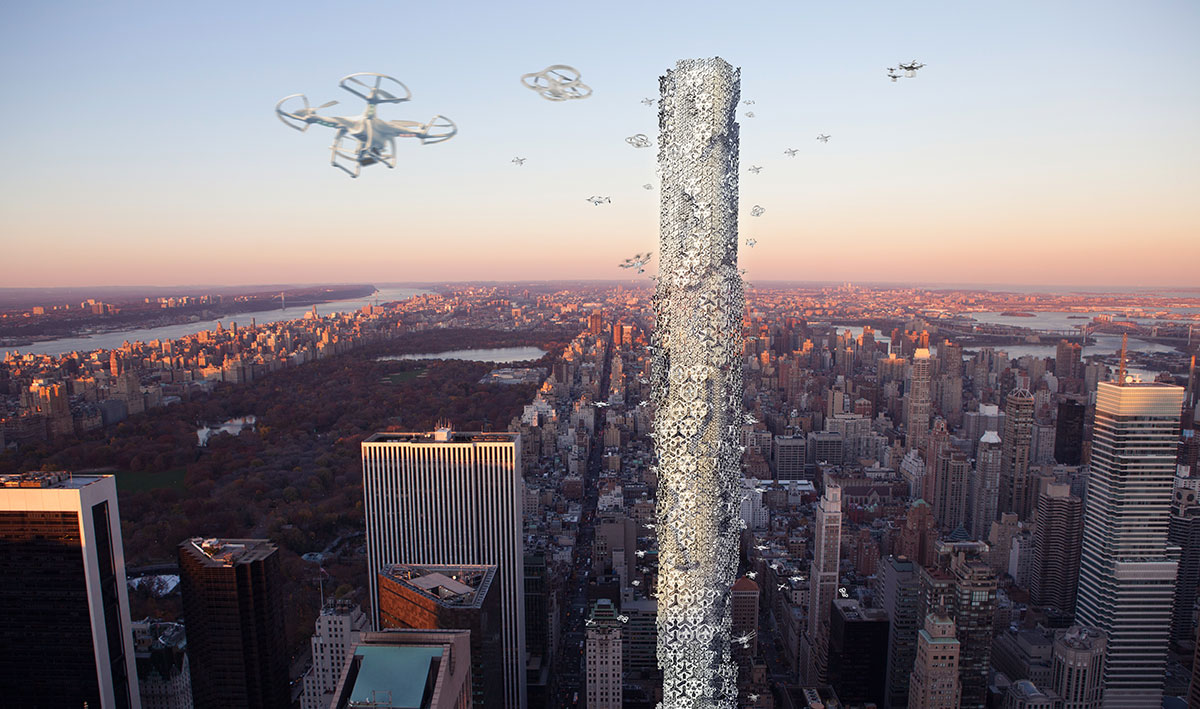An Amazon patent application has just been published, and it reveals a futuristic idea for a drone delivery system using a beehive-like tower from where drone units can pick up packages and dock for recharging purposes.
Large warehouses and fulfillment centers are okay when you have enough space, like outskirts of cities and closer to rural populations. But what about urban locations, where space is premium and very hard to come by?
That’s where this idea will kick in.
Amazon envisages tall towers that have ports on the outer side to act as docking and reloading stations. The packages will be transported within these towers by a human workforce assisted by robots, much like the setup in Amazon’s fulfillment centers today. However, these robots may also be used to carry the drone units to a maintenance facility when required.

Such a system would allow Amazon to effectively expand its one-hour and two-hour delivery offerings to more cities, especially highly populated ones where it’s impractical to have large warehouses or fulfillment centers.
Here’s an artist’s concept rendering of what that might look like:

Of course, a patent is no guarantee that Amazon will actually build such beehive-like towers for drone deliveries, but it does show that the company is actively seeking to make its last-mile delivery systems faster and more efficient.
Why is this critical?
Amazon has been trying for the past ten years to break into the grocery market in a meaningful way, but has so far been unsuccessful with its many attempts. Now, however, their focus is on having a physical footprint across the nation that will allow them to provide one-hour and two-hour deliveries to the majority of the U.S. population.
While their planned acquisition of Whole Foods Market is one part of that strategy, their warehouse expansion plan is the more immediate approach.
Online grocery sales doesn’t hold a very big market share of the food and beverage segment in the United States today. But that is all set to change over the next decade.
“A key takeaway of the FMI-Nielsen report is that online grocery spending could grow during the 2016-2025 forecast period from 4.3 percent of the total U.S. food and beverage sales to as much as a 20 percent share, or reaching more than $100 billion, based on the most upbeat scenario. Last year, online grocery sales were about $20.5 billion.” – CNBC
That $100 billion is what Amazon is targeting, whether it’s with fulfillment center growth or acquiring grocery retail chains like Whole Foods Market. That’s also why drone delivery is a big item on Amazon’s agenda over the next several years.
They already have the data center bandwidth to handle the massive compute workload required for the artificial intelligence technologies required to operate these drones. They’re ramping up their fulfillment center footprint in key geographical areas to cover the majority of the U.S. population, and they’re also looking at inorganic growth through acquisition.
It’s easy to see how the pieces are being aligned to help Amazon dominate online grocery sales over the next ten years. If there’s any single entity that can stand up to this impending onslaught against the traditional brick and mortar segment, it’s Walmart.
Over the next decade, we envision Amazon and Walmart establishing themselves in a new segment of retail: a hybrid format with high technology and large physical footprints close to urban centers that will take both companies to new and dizzying heights.
The world of retail is about to be disrupted in a big way, and we’re right in the middle of it.
Thanks for visiting! Would you do us a favor? If you think it’s worth a few seconds, please like our Facebook page and follow us on Twitter. It would mean a lot to us. Thank you.



